Though Gustave Eiffel is renowned for creating some of the world's most famous landmarks, especially his namesake tower, he endured a number of setbacks throughout his storied career.

Wikimedia CommonsGustave Eiffel was the civil engineer who built the Eiffel Tower and the Statue of Liberty.
The Eiffel Tower is one of the most iconic landmarks in the whole world. But the engineer behind the tower, Gustave Eiffel, did much more than just design the famous Parisian structure.
During his 91 years of life, Eiffel helped create some of the most noteworthy landmarks of the 19th century, including the Statue of Liberty. He was even involved in the French effort to build the Panama Canal, though that project ultimately did not work out for him or his collaborators.
While Eiffel’s career wasn’t all smooth sailing, his lasting influence on the world of art, architecture, and engineering is undeniable.
Gustave Eiffel’s Journey To Becoming A World-Famous Engineer
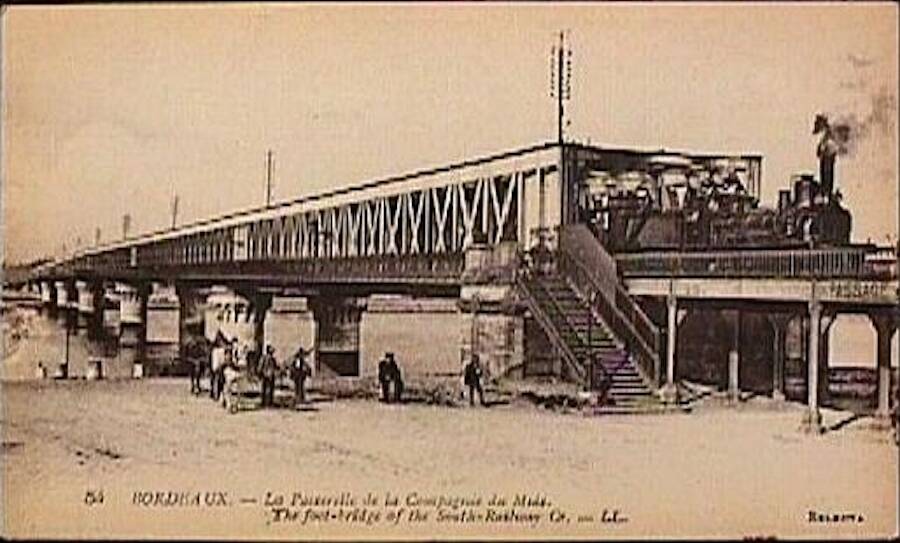
Wikimedia CommonsThe Bordeaux overpass was one of Gustave Eiffel’s first major projects.
Gustave Eiffel was born in Dijon, France on Dec. 15, 1832. In his youth, he was never the most disciplined student in school.
It was thanks to his history and literature teachers, and his uncle Jean-Baptiste Mollerat, that Eiffel began to take his education more seriously. He eventually earned his baccalauréat in humanities and science.
He attended École Centrale des Arts et Manufactures in Paris, graduating in 1855, with a specialization in chemistry. Eiffel initially hoped to work in his uncle’s workshop in Dijon, but that didn’t work out.
Instead, Eiffel started working as a secretary for railway engineer Charles Nepveu. Unfortunately, Nepveu’s company was in the midst of serious financial difficulties, but Eiffel continued to work for Nepveu even when he couldn’t properly compensate him. Soon, thanks to Nepveu, Eiffel had a new job designing a bridge for the Saint Germaine railway.
And Nepveu wasn’t done helping Eiffel find work. After Nepveu’s business was absorbed by the Compagnie Générale des Chemins de Fers, Nepveu arranged for Eiffel to become the head of the research department.
By the time Eiffel was in his mid-20s, he was in charge of building the Bordeaux Bridge. Though he didn’t design the structure, he was responsible for the execution plans and directing the workers on how to proceed, which were no small tasks. After the successful completion of the project, he was appointed the principal engineer of Compagnie Belge.
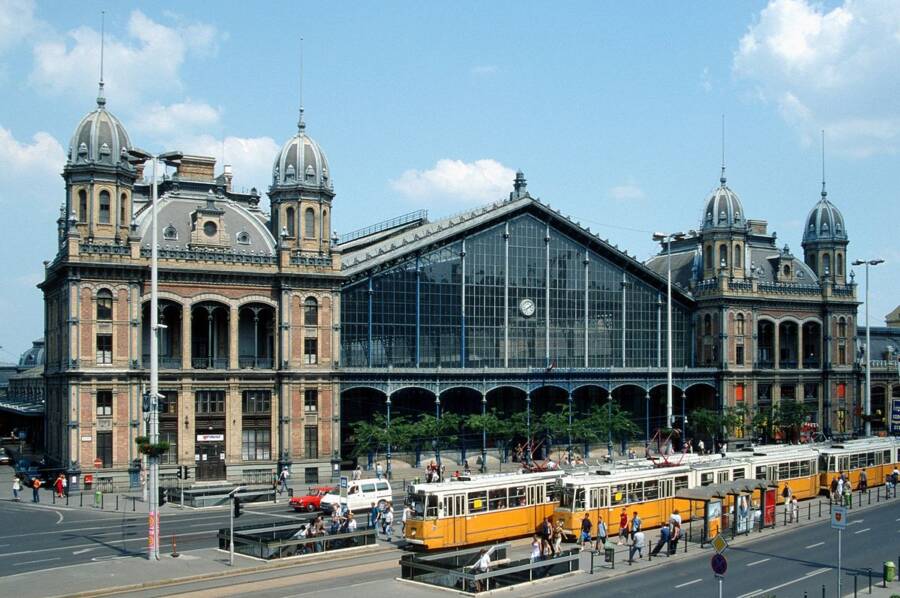
Wikimedia CommonsThe Budapest Nyugati railway station in Hungary, one of Eiffel’s notable structures that still stands today.
In 1866, Gustave Eiffel set up his own business, choosing to work as an independent constructor. However, he also joined forces with Théophile Seyrig in 1868, creating the company Eiffel et Cie.
Eiffel et Cie would soon be assigned to work on a number of important projects, like the Budapest Nyugati railway station in Hungary and the Maria Pia Bridge across the Douro River in Portugal.
The Budapest Nyugati station in particular exemplified Eiffel’s skills with metal. In fact, a metal structure was the focal point of the building, surrounded on each side by stone and brick structures.
Gustave Eiffel’s Growing List Of Triumphs — Including The Statue Of Liberty’s Framework
Projects like the Maria Pia Bridge and the Budapest Nyugati railway station solidified Gustave Eiffel’s reputation as an engineer, but it was the Exposition Universelle in 1878 that really helped him make a name for himself.
The exposition featured numerous models and drawings that Eiffel et Cie had developed for different projects. Even more impressive, Eiffel had helped to design some of the buildings for the exposition itself.
By 1879, Eiffel and Seyrig were no longer partners, and Eiffel et Cie was renamed Compagnie des Établissements Eiffel. Here, Eiffel would work on a variety of new projects, leading to his most well-known accomplishments.
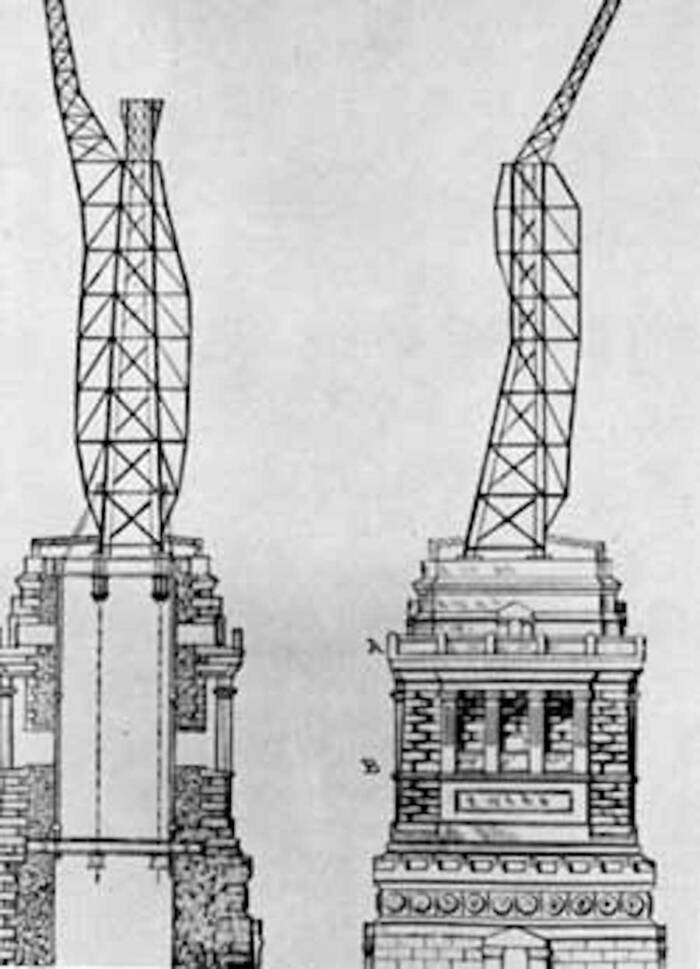
Wikimedia CommonsEiffel’s framework for the Statue of Liberty helped ensure that the statue would be structurally sound.
The famed sculptor Frédéric-Auguste Bartholdi fatefully reached out to Eiffel for help with his Statue of Liberty project, a gift from France to the United States honoring America’s centennial of independence. Though Bartholdi had a great interpretation of freedom in mind for the statue, he needed an engineer to help come up with a supportive metal framework to make sure that the statue was as strong and stable as possible.
Originally, architect Eugène Viollet-le-Duc had been assisting Bartholdi, but he died in 1879. So, Bartholdi recruited Eiffel in 1881 to take over.
Eiffel’s experience with wind stress from his previous projects made him the perfect man for the job. He created a design to properly support the copper sheeting of the statue and ensure that it could withstand high winds.
He ultimately created a four-legged pylon structure, which served as a supportive base for the tall statue. The statue was completed and assembled in Paris between 1881 and 1884 before being shipped off to the United States, where it still sits today on Liberty Island in New York Harbor.
How Gustave Eiffel Built The Eiffel Tower
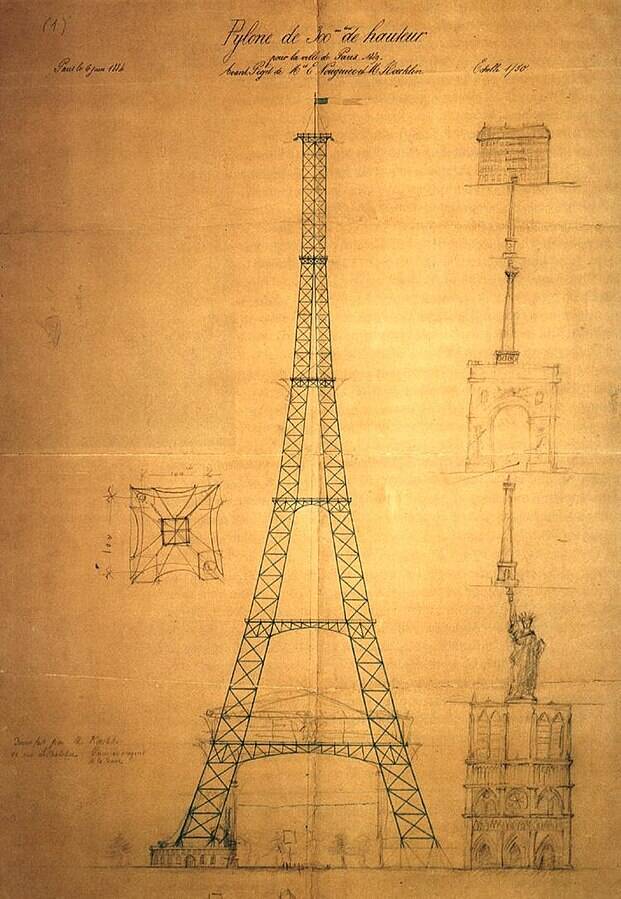
Wikimedia CommonsAn early sketch of the Eiffel Tower by engineer Maurice Koechlin.
By far Gustave Eiffel’s most well-known work, the Eiffel Tower was designed for the 1889 World’s Fair to celebrate the 100th anniversary of the French Revolution. The innovative project was originally proposed by engineers Maurice Koechlin and Emile Nouguier in 1884.
Koechlin showed Eiffel some early sketches, but he wasn’t initially that interested. Still, he wanted to see where further designs could take the tower. It wasn’t until Stephen Sauvestre, an architect who worked for Eiffel, took a stab at designing more embellishments for the tower, like decorative arches and a bell tower, that Eiffel’s interest began to rise.
Not much actual progress was made on the project until 1886, when it was announced there would be a contest for a design of a flagship structure to be built for the 1889 World’s Fair. In June of 1886, it was announced that Eiffel’s final design for his tower met the desired requirements and a contract was officially signed with the government on Jan. 8, 1887.
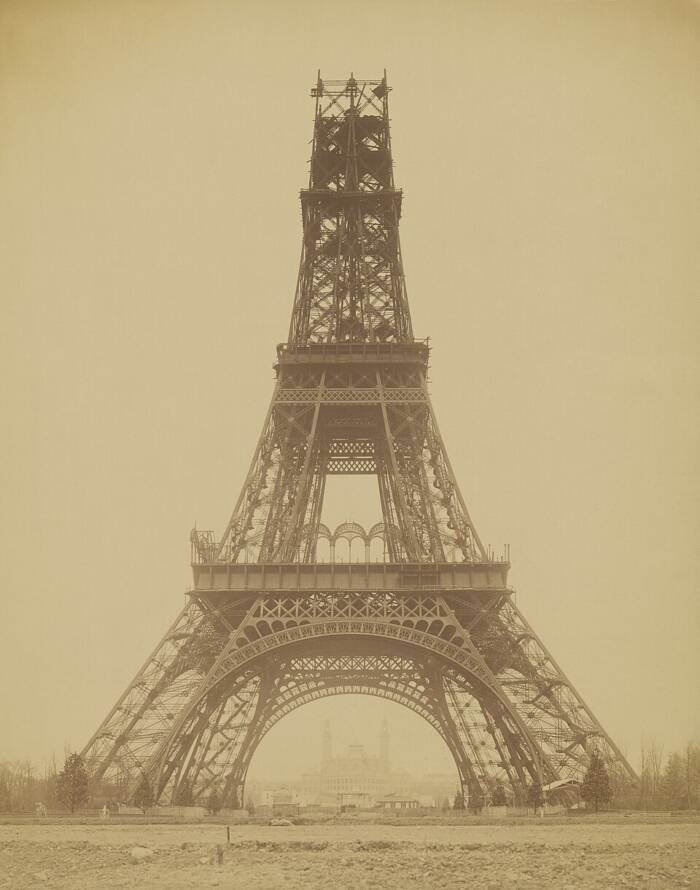
Wikimedia CommonsThe Eiffel Tower, built by Gustave Eiffel, under construction circa 1888.
Not only was Eiffel’s tower impressively tall for the time period — standing about 1,000 feet high — but it was also incredibly intricate, composed of 18,000 wrought iron pieces held together with 2.5 million rivets.
Throughout construction, Eiffel faced controversy for the appearance of the tower, as well as speculations that the project was impossible to complete.
However, the Eiffel Tower was completed on March 31, 1889, right on time to be displayed at the World’s Fair. And while many Parisians initially hated the design, with some critics calling it a “truly tragic street lamp” and “a diabolic undertaking of a boilermaker with delusions of grandeur,” the structure slowly began growing on some locals. And before long, the Eiffel Tower would become one of the most famous landmarks in France.
Eiffel Was Involved In Other, Less Iconic Works — Including The Panama Scandal
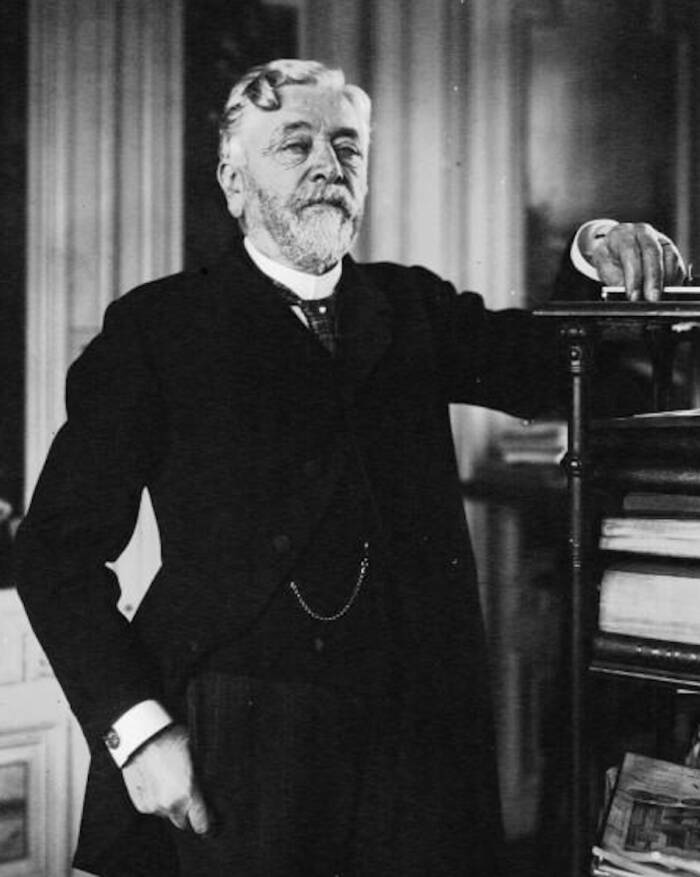
Wikimedia CommonsGustave Eiffel, still best known as the man who built the Eiffel Tower, pictured in 1910.
There are countless other structures and landmarks that Gustave Eiffel and his collaborators were involved with. Some are still standing, while others have been removed, dismantled, or even destroyed.
Some of his works that have been destroyed include the Eiffel Bridge in Zrenjanin, Serbia and the Souleuvre Viaduct in Normandy, a mostly demolished bridge where only the pillars still remain.
There are other buildings and structures that are suspected to be the work of Eiffel, but have not been confirmed. These unconfirmed structures include the Malleco Viaduct in Chile, and the Palácio de Ferro in Angola.
In addition to his completed works, there are other projects that the engineer was a part of that never came to fruition. This infamously includes the French attempt at building the Panama Canal.
Specifically, Eiffel was supposed to help build the locks for the Panama Canal. Instead, he found himself embroiled in a poorly managed project and an infamous financial scandal. Even though Eiffel wasn’t personally blamed for the disaster, he was still indicted for fraud, fined 2,000 francs, and sentenced to two years in prison for his involvement.
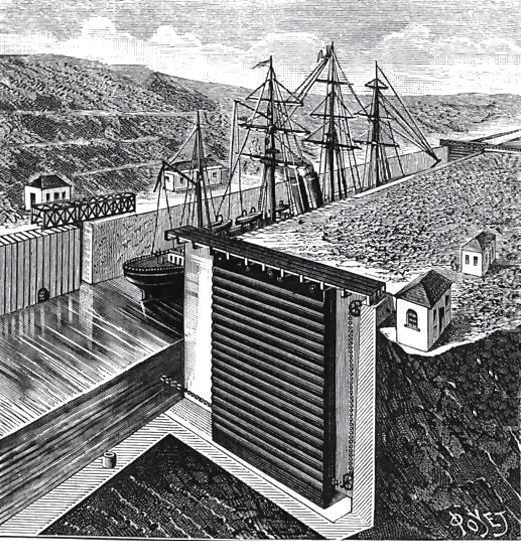
Wikimedia CommonsEiffel was commissioned to design the locks for the French Panama Canal project.
The ruling against him was eventually annulled, but the hit to his reputation was reportedly significant enough that he withdrew from his career in business and dedicated the final years of his life to working as a scientist.
(Meanwhile, the Panama Canal was eventually completed by the United States, and the project was officially finished by 1914.)
In his later years, Eiffel began to experiment more with wind resistance and aerodynamics, inspired by his experience designing structures with the wind in mind. He also never stopped working on ways to improve the famous tower that bore his name, helping to ensure that the legendary landmark would stand for decades to come. This work would later inspire the Wright brothers, paving the way for countless new innovations in the aviation world.
Gustave Eiffel, who died at age 91 in Paris on Dec. 27, 1923, had a storied life beyond the Eiffel Tower and Statue of Liberty. His designs continue to be studied and influence the work of engineers and architects today.
After reading about Gustave Eiffel, the man who built the Eiffel Tower, go inside La Belle Époque, France’s golden age at the turn of the 20th century. Then, learn about the destruction of 11 historic American landmarks.





